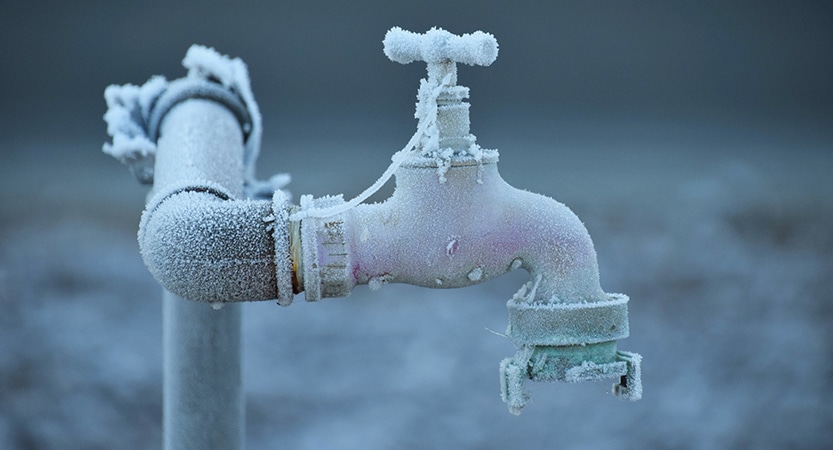Protecting Your Pipes from Cold Weather Damage: Critical Approaches
Protecting Your Pipes from Cold Weather Damage: Critical Approaches
Blog Article
What're your insights and beliefs on Preventing and dealing with frozen pipes?

Winter can ruin your plumbing, particularly by freezing pipelines. Below's how to stop it from happening and what to do if it does.
Intro
As temperature levels drop, the danger of frozen pipes rises, potentially causing pricey repair work and water damages. Recognizing exactly how to prevent icy pipes is crucial for homeowners in cold climates.
Recognizing Icy Pipes
What triggers pipelines to ice up?
Pipes freeze when exposed to temperatures below 32 ° F (0 ° C) for prolonged durations. As water inside the pipelines freezes, it broadens, taxing the pipeline wall surfaces and potentially creating them to burst.
Dangers and damages
Frozen pipes can result in water interruptions, residential property damage, and pricey repair services. Ruptured pipelines can flood homes and trigger extensive architectural damage.
Indicators of Frozen Pipeline
Determining icy pipes early can prevent them from rupturing.
Exactly how to determine frozen pipes
Look for lowered water flow from taps, uncommon odors or sounds from pipes, and noticeable frost on revealed pipes.
Prevention Tips
Protecting susceptible pipelines
Cover pipes in insulation sleeves or use warm tape to shield them from freezing temperatures. Concentrate on pipelines in unheated or outside areas of the home.
Home heating techniques
Keep interior areas properly heated up, particularly locations with pipes. Open up cabinet doors to allow warm air to distribute around pipes under sinks.
Securing Outside Plumbing
Yard tubes and outside faucets
Separate and drain yard hoses prior to winter months. Install frost-proof faucets or cover outside faucets with insulated caps.
What to Do If Your Pipes Freeze
Immediate activities to take
If you presume icy pipelines, maintain faucets open to soothe pressure as the ice thaws. Use a hairdryer or towels soaked in hot water to thaw pipes gradually.
Long-Term Solutions
Architectural changes
Think about rerouting pipes away from exterior walls or unheated locations. Include added insulation to attics, basements, and crawl spaces.
Upgrading insulation
Invest in high-grade insulation for pipelines, attic rooms, and wall surfaces. Correct insulation helps maintain consistent temperatures and decreases the danger of frozen pipes.
Conclusion
Preventing icy pipelines calls for positive steps and fast actions. By comprehending the causes, signs, and safety nets, house owners can safeguard their pipes throughout cold weather.
5 Ways to Prevent Frozen Pipes
Drain Outdoor Faucets and Disconnect Hoses
First, close the shut-off valve that controls the flow of water in the pipe to your outdoor faucet. Then, head outside to disconnect and drain your hose and open the outdoor faucet to allow the water to completely drain out of the line. Turn off the faucet when done. Finally, head back to the shut-off valve and drain the remaining water inside the pipe into a bucket or container. Additionally, if you have a home irrigation system, you should consider hiring an expert to clear the system of water each year.
Insulate Pipes
One of the best and most cost-effective methods for preventing frozen water pipes is to wrap your pipes with insulation. This is especially important for areas in your home that aren’t exposed to heat, such as an attic. We suggest using foam sleeves, which can typically be found at your local hardware store.
Keep Heat Running at 65
Your pipes are located inside your walls, and the temperature there is much colder than the rest of the house. To prevent your pipes from freezing, The Insurance Information Institute suggests that you keep your home heated to at least 65 degrees, even when traveling. You may want to invest in smart devices that can keep an eye on the temperature in your home while you’re away.
Leave Water Dripping
Moving water — even a small trickle — can prevent ice from forming inside your pipes. When freezing temps are imminent, start a drip of water from all faucets that serve exposed pipes. Leaving a few faucets running will also help relieve pressure inside the pipes and help prevent a rupture if the water inside freezes.
Open Cupboard Doors
Warm your kitchen and bathroom pipes by opening cupboards and vanities. You should also leave your interior doors ajar to help warm air circulate evenly throughout your home.

Hopefully you enjoyed our article about Helpful Tips to Prevent Frozen Pipes this Winter. Thanks a lot for taking time to read through our post. Kindly take a moment to distribute this article if you enjoyed reading it. We appreciate your readership.
Check It Out Report this page